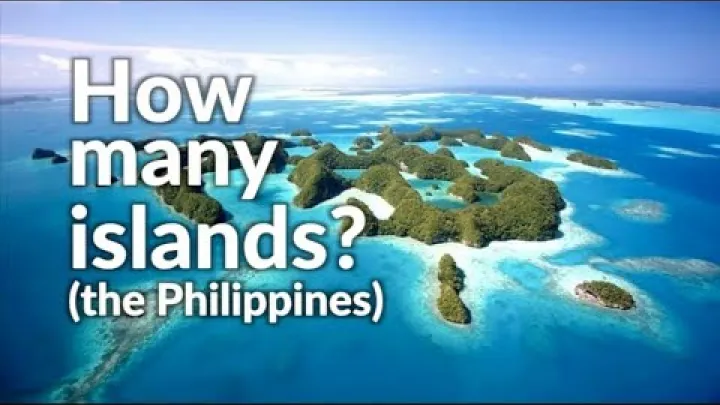How Many Islands are in the Philippines?
The Philippines, an archipelagic country in Southeast Asia, is renowned for its stunning natural beauty and vibrant culture. This island nation, the third-largest English-speaking country in the world, offers a captivating blend of diverse landscapes and rich history. But just how many islands make up this archipelago? The answer is more complex than you might expect.
The Official Count
For many years, the commonly cited number of islands in the Philippines was 7,107. This figure stemmed from surveys conducted in the mid-20th century. However, with advancements in mapping technology and more thorough exploration, a wealth of previously uncharted islands emerged from the depths.
In 2017, the National Mapping and Resource Information Authority (NAMRIA) officially revised the count to 7,641 islands. This substantial increase underscores the dynamic nature of this archipelago and the ongoing efforts to accurately document its vast territory.
It's crucial to understand that this number isn't set in stone. The interplay of tidal fluctuations, rising sea levels, and the continuous processes of geological formation can influence the precise number of islands at any given time. Some islands might be submerged during high tide, while others may emerge as new landmasses are created.
For more details, see the following sources:
- About the Philippines - Philippine Embassy, Islamabad, Pakistan
- The Philippine Islands: Count, Culture, Continuity - Kollective Hustle
- How Many Islands Are In The Philippines? - Ian Fulgar
Islands and Islets: Is There a Difference?
While the term "island" generally refers to any landmass surrounded by water, a distinction exists between "islands" and "islets." An islet is typically a very small island, often unnamed and with minimal or no vegetation. Islets may be too small to support human habitation.
In the Philippines, many of the smaller land features fall under the category of islets. These islets often arise from coral formations or volcanic activity. The larger islands, in contrast, have more diverse geological origins and sustain larger populations.
Geographical Divisions
The 7,641 islands of the Philippines are broadly categorized into three main geographical divisions: Luzon, Visayas, and Mindanao. These islands, encompassing a total land area of approximately 300,000 square kilometers, boast the fifth-longest coastline in the world, stretching over 36,289 kilometers. Of the thousands of islands, only about 2,000 are inhabited.
Major Island Groups
- Luzon: The largest and most populous island in the Philippines, Luzon is home to the nation's capital, Manila. It also encompasses the Babuyan and Batanes island groups to the north.
- Visayas: Situated in the central region of the archipelago, the Visayas comprises several islands, including Cebu, Bohol, and Leyte. The Visayas is known for its stunning beaches, vibrant coral reefs, and rolling hills.
- Mindanao: The southernmost major island, Mindanao is renowned for its rich biodiversity and cultural diversity. It is home to a variety of indigenous communities and boasts a unique blend of cultural influences.
Has the Number of Islands Changed Over Time?
Yes, the official count of islands in the Philippines has evolved over time. The recent update from 7,107 to 7,641 in 2017 reflects not only advancements in mapping technology but also the discovery of new islands.
Natural events, particularly volcanic activity, can also influence the number of islands. Volcanic eruptions can give rise to new islands or cause existing ones to disappear. A notable example is the emergence of Didicas volcano east of the Babuyan Islands in 1952.
Why Does the Number Matter?
The number of islands in the Philippines is not merely a geographical statistic. It has significant implications for various aspects of the country, including:
- Environmental Management: Each island possesses its own distinct ecosystems and biodiversity that require careful protection.
- Economic Development: The islands offer a diverse range of economic opportunities, from tourism and fishing to agriculture and mining.
- National Identity: The archipelagic nature of the Philippines is deeply intertwined with the country's national identity and culture.
Conclusion
The Philippines, with its 7,641 islands, stands as a testament to the power of natural forces and the enduring human quest for exploration and understanding. While the exact number of islands may continue to evolve with ongoing surveys and natural processes, the sheer magnitude of this archipelago underscores the country's unique geography, rich biodiversity, and vibrant cultural heritage.
The story of the Philippines' islands is still being written. Ongoing research and exploration continue to reveal new insights into the archipelago's formation, its diverse ecosystems, and the intricate relationship between the Filipino people and their island home.
Your Nearby Location
Your Favorite
Post content
All posting is Free of charge and registration is Not required.
